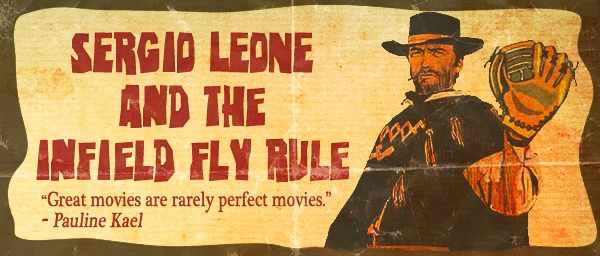ENNIO MORRICONE 1928 - 2020
Back when I was but a whelp (six or seven years old), it was determined that I was too young to see these mysterious movies, A Fistful of Dollars and For a Few Dollars More, which I saw advertised on the hometown movie theater’s “show calendar.” But I knew the music. My first exposure to Ennio Morricone’s great scores for Sergio Leone’s “Dollars trilogy” came not from Morricone himself, but from this album of themes reorchestrated from the movies’ soundtracks by Hugo Montenegro, a composer and orchestrator who hit the big time by introducing these classics to a wide American audience. And when we would go on weekend drives with my aunt, who had a spiffy new eight-track player installed in her pickup truck, she would throw Montenegro’s covers on the stereo and we would cruise across the Southern Oregon desert to the soaring strains of Morricone’s reinterpreted soundscapes.
So even though those records (or tapes) weren’t the real thing, that music got its hooks into my brain, as it did millions of others, and by the time The Good, The Bad and the Ugly strode into town for a week’s stay at the Alger Theater I was ready, and that, as they say, was all she wrote. After I saw it on the big screen, every time one of the three pictures would show up, cropped and gutted, on Sunday afternoon TV, I was right there, and they slowly became all-time favorites, especially TGTBATU. (My obsession with Once Upon a Time in the West would take hold later, in college.)
In those days, you had to settle for the movies in any form TV served them up, and it wasn’t usually very advantageous toward seeing the films at their full power. But Morricone’s music couldn’t be bowdlerized or diluted by randomly selected commercial breaks. It transcended the cracks and crevices and missing limbs of the movies as I frequently experienced them— on top of all the other violations, after seeing TGTBATU in a theater, they were always in black-and-white on my parents’ TV. But the twang of those guitars, the whistle which cut through the desert air like a messenger from the furthest reaches of the Spanish hills that passed for a reimagined American West, the vulture-like wah-wah vocalizations, the swooning, haunted orchestrations, all those textures that Morricone contributed to the realization of Sergio Leone’s fevered mythological vision of a time and place that existed and yet never did, those were all in color.
And even though he’s now gone, Morricone’s music, for these films and the hundreds of others that we know, as well as the hundreds we have yet to discover, will always hold the vibrant beauty, discordant lyricism and perplexing, unexpected textures that can only be represented by all the possible hues and tints of the spectrum.
Thank you, signore, for sweeping me away, for bringing me here, for giving me, and all of us, so many sonic connections and associations, and for allowing us the passage into other worlds that will be open and beckoning for as long as the music can be heard. And, unlike for us, that stands to be a forever life.
Listen as the harmonica, the guitars, the singers, the orchestra all continue to prove, despite today’s sad news, that Ennio Morricone lives.
****************************************





















